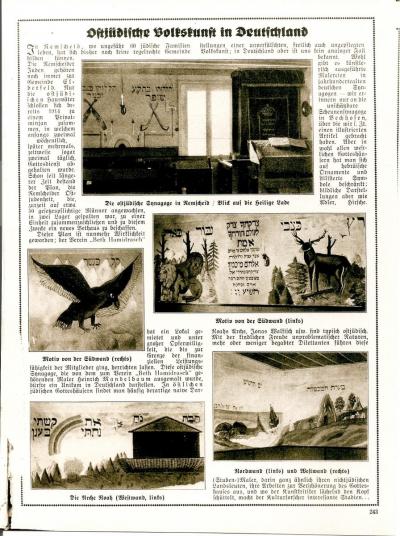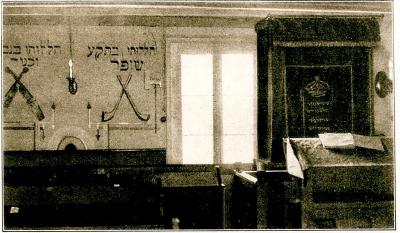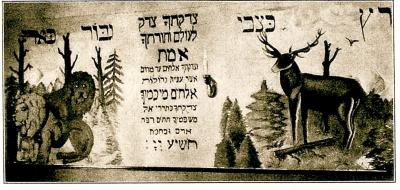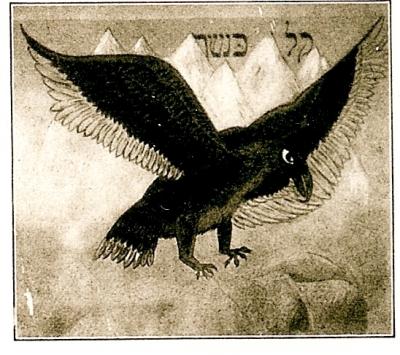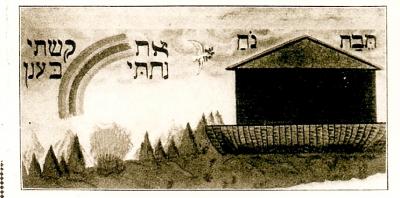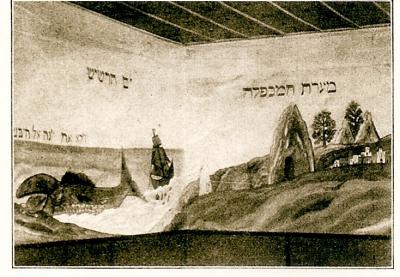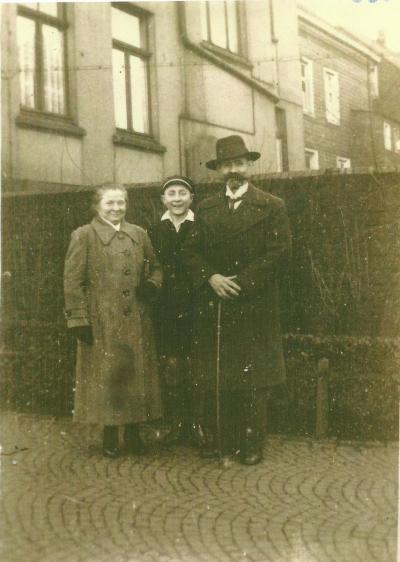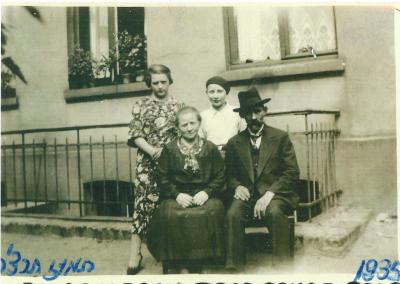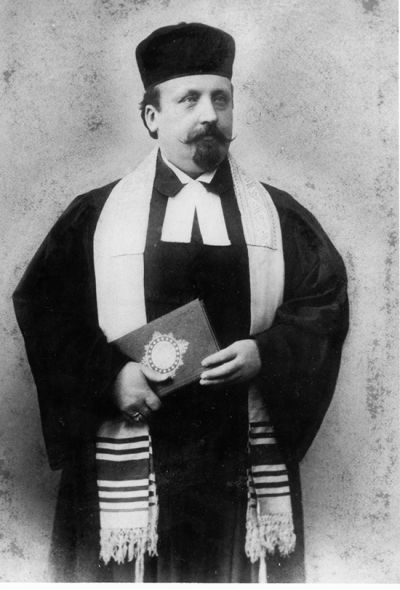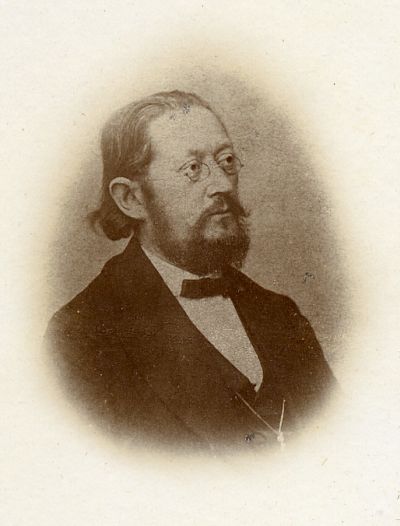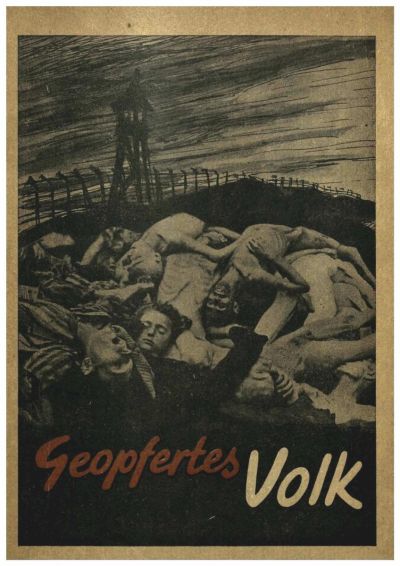The Polish-Jewish prayer house in Remscheid 1928 - 1933
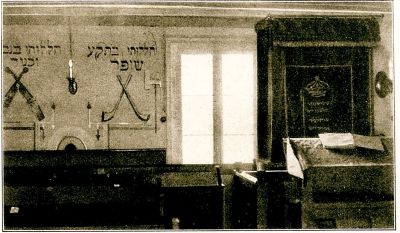
Thanks to the photographs in the press article (see the mediatheque) and later descriptions given by former members of the congregation, the individual motifs of the unusual paintings and their Hebrew inscriptions in the German synagogue have been passed down to us. On the East wall right of the Torah shrine, on the left next to the window were two crossed schofars and two crossed violins. Above them were two Hebrew quotations from the Tehillim, Psalm 150.3 “Praise him with the sound of the shofar” and “praise him with the psaltery and harp”. On the south wall were two lions on the left and, on the right, a deer in a wood. Above them were the inscriptions: “bold as a lion” and “speedy as a deer”. On the extreme right of the south wall is an eagle, above which are the words “light as an eagle”. The illustrations refer to the Mishnah tractate “Pirkei Avot” (Chapters of the Fathers) 5.20, “Be bold as a leopard, light as an eagle, fleeting as a deer and mighty as a lion to do the will of your Father in Heaven.”[5]. Between the lion and the deer is a quotation from the Mincha prayer (afternoon prayer) on the Sabbath: “Thy Love is eternal justice, Thy love is truth! Thy love, oh God reaches to the heavens, with it Thou hast accomplished great things, oh God, who can be compared to Thee, Thy love is like powerful mountains, Thy justice like the great Flood, Thou givest sustenance to men and beasts, Eternal One.”[6]. To the left of the West wall were illustrations to the Chapters of the Fathers, Noah’s Ark and a dove with a branch, next to which was the rainbow, the symbol of God’s covenant never to send a flood to the Earth again. Above the Ark were the words “Noah’s Ark”; to the right and the left of the rainbow was a quotation from Genesis 9.13, “I have set my rainbow in the clouds”. On the right of the West wall were illustrations to the book of Jonah, the legendary Lake Tarshish, the ship in the storm and the whale which disgorged Jonah on the shore. Above the water are the words, “The Lake of Tarshish” and below the water, “and it [the whale] disgorged Jonah onto dry land”, a quotation from Jonah 2.11. The North wall depicts the cave of Machpela near Hebron. This was where the forefathers Abraham, Isaac and Jacob were buried with their wives Sarah, Rebecca and Leah. Above the illustration are the words “The cave of Machpela”.[7]
The article in the “Israelite Family Sheet” not only gives us an impression of the pictures in the Remscheid prayer house, it also gives us, from today’s perspective, an irritating impression of the way in which acculturated German Jews perceived their fellow believers in and from Eastern Europe. Sentences like “In eastern Jewish synagogues one can often find such naive portraits of an unadulterated, if admittedly unkempt folkloric art” and “These (hobby) painters […] embellish God’s house with the childish pleasure of carefree natures and more or less talented dilettantes, and where the art critic shakes his head with a smile, the cultural researcher makes interesting studies …”, illustrate the ambivalent relationship which ranged from arrogant rejection on the one hand to fascination on the other. Whereas in the 19th century all Jews who lived in the areas which made up the Polish-Lithuanian Union under the Jagiellon dynasty, were commonly known as “Polish Jews”, at the beginning of the 20th century this term was replaced by the words “East Jews”. That said, the term used in the article is more than purely geographical: it also conceals a stereotype. Many German Jews regarded the “East Jews” as representatives of Jewish ghettos, a way of life that they had long outgrown and that was culturally backward, religiously orthodox and clinging to out-of-date customs and traditions . A number of Jewish intellectuals, on the other hand, regarded the “East Jews” as representing pure, unadulterated Judaism and called on people to reflect on their own roots.[8]
[5] Translation in: Grunwald, Beschreibung der Malereien, p. 56.
[6] Translated in: Sidur Sefat Emet, p. 143.
[7] I should like to thank Frau Dr. Ursula Reuter (Salomon Ludwig Steinheim-Institut) for the translations of the inscriptions from the Hebrew.
[8] Maurer, Ostjuden, pp.11-16. For the image of “East Jews” see e.g.: Aschheim, Brothers and strangers. Kurth / Salzborn, Antislawismus und Antisemitismus. Panter, Selbstreflexion und Projektion. Rüthers, Sichtbare und unsichtbare Juden.
